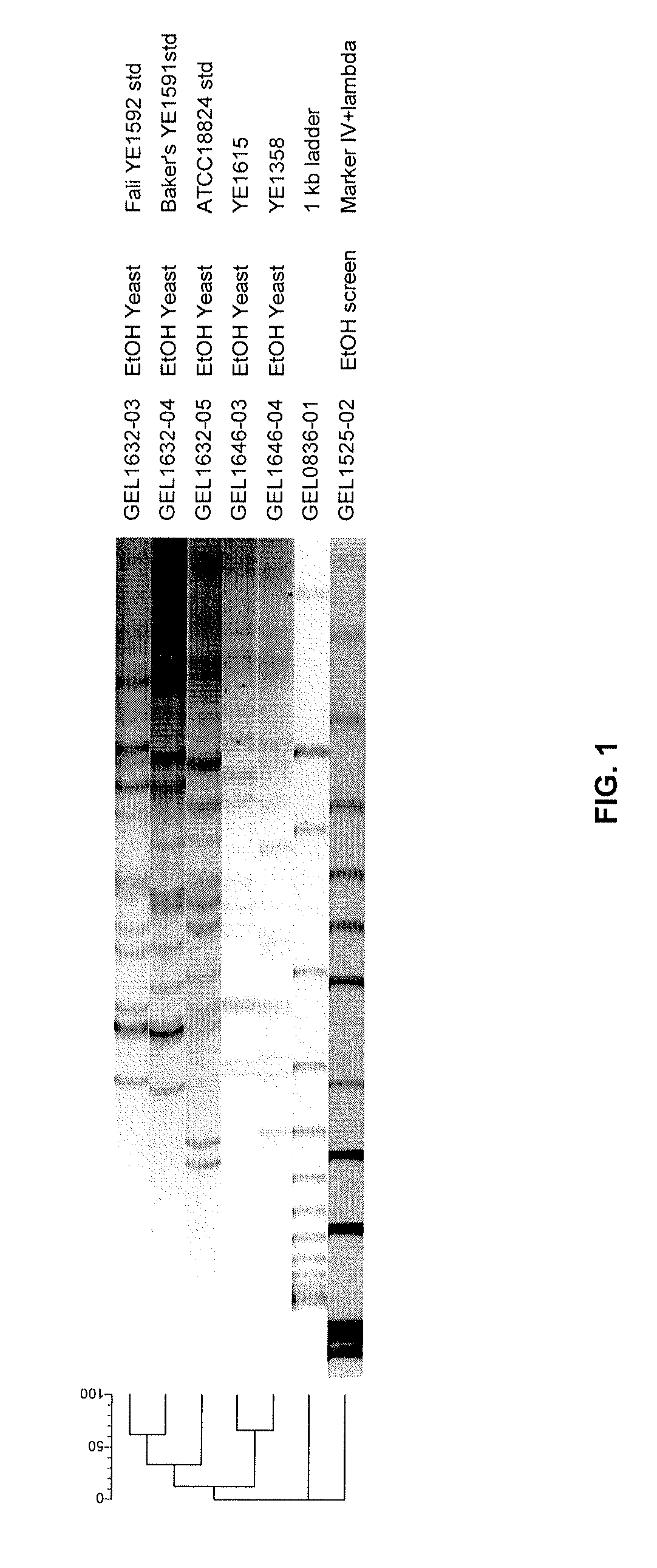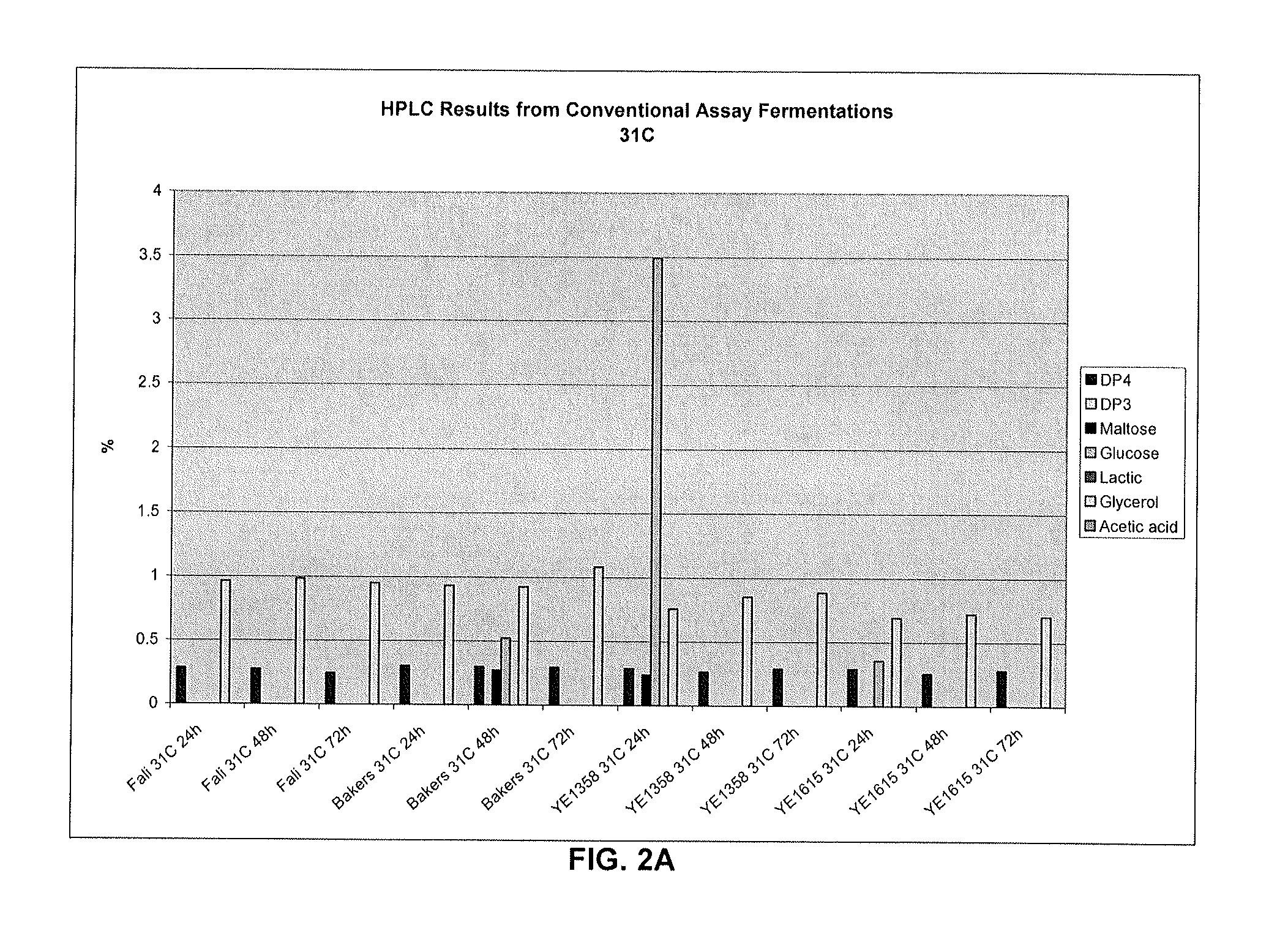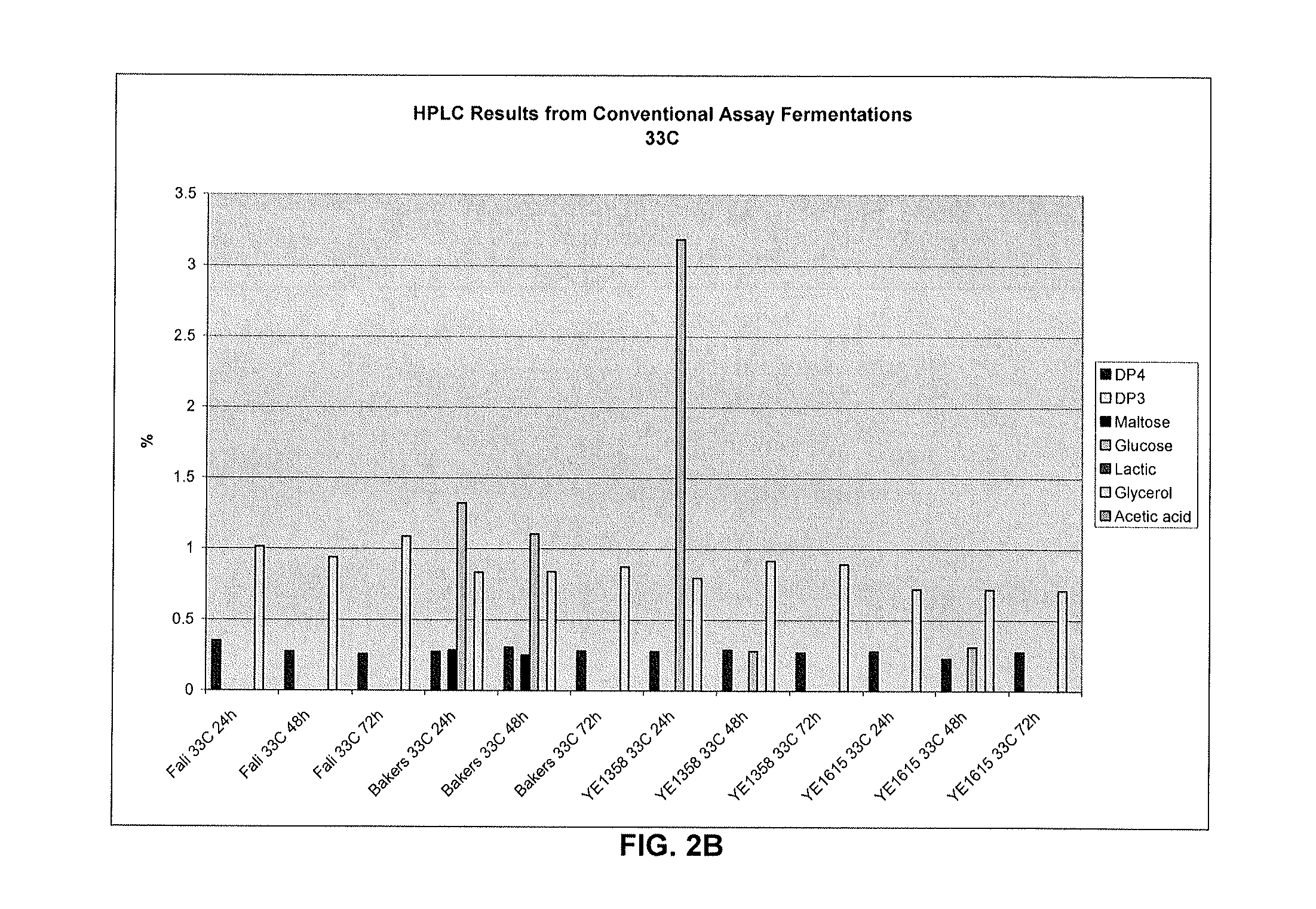Yeast strains for improved ethanol production
a technology of ethanol production and yeast, applied in the field of ethanol production processes, can solve problems such as complex processes, and achieve the effect of improving the ability to enhance ethanol production
- Summary
- Abstract
- Description
- Claims
- Application Information
AI Technical Summary
Benefits of technology
Problems solved by technology
Method used
Image
Examples
example 1
Glucose and Ethanol Tolerance
[0055]Yeast strains were initially screened for glucose tolerance using the 96-well microtiter plate format. Yeast Nitrogen Base media (Difco) with varying levels of glucose concentration (up to approximately 60%) was utilized for the growth media and current Commercial Yeast Strains (Fali and Baker's yeast) served as baseline measurements. All plates demonstrated sufficient growth at all glucose levels and Commercial Yeast Strains grew at 60% glucose concentration.
[0056]Yeast strains were also screened for ethanol tolerance utilizing the same Yeast Nitrogen Base utilized for the growth media, with 60% glucose concentration and varying levels of ethanol concentration (up to approximately 25%). Commercial Yeast Strains did not grow at 10% or greater ethanol concentration with the 60% glucose concentration. Yeast strains Saccharomyces cerevisae YE1358 and YE1615 demonstrated either good growth or light growth at both 15% and 20% ethanol concentrations and ...
example 2
Ethanol Production
[0057]Yeast collections were further screened for ethanol production using a colorimetric kit and ethanol UV-methods (Boehringer Mannheim / R-Biopharm Enzymatic BioAnalysis / Food Analysis). Commercially realistic growth media was utilized for ethanol production screening; High Moisture Corn broth (pH of 4.2) containing 2% glucose concentration and 1% 2M urea concentration. Multiple plates were grown at 30° C., 35° C., 40° C., and 45° C. and subsequently 24 hour and 72 hour readings were recorded. Several yeast strains, including yeast strains Saccharomyces cerevisae YE1358 and YE1615 isolates, produced an increased amount of ethanol in comparison to the Commercial Yeast Strain standards.
example 3
Residual Glucose Levels
[0058]Assays for glycerol levels were also analyzed for the yeast strains, demonstrating low levels for all strains, including YE1358 and YE1615, indicative of low levels of fermentation stress. Strains YE1358 and YE1615 demonstrated lower residual glucose and higher ethanol amounts than both Commercial Yeast Strains, indicating increased glucose conversion to ethanol. None of the strains reached a 1% residual glucose level, indicative of incomplete fermentation. The HPLC results show a difference in the amount of byproduct acetic acid produced, indicating a heterogeneous metabolic conversion of glucose.
[0059]HPLC samples were collected at the final time point of 72 hours. (FIGS. 2A-2D). The residual sugar was lowest at 33° C. and trending towards increasing at 35° C. and 37° C. Only yeast strains YE1358 and YE1615 reached a residual glucose level below 1%, with 0.35% residual glucose for YE1358 and 0.88% residual glucose for YE1615, respectively. Additionally...
PUM
| Property | Measurement | Unit |
|---|---|---|
| temperature | aaaaa | aaaaa |
| temperature | aaaaa | aaaaa |
| temperature | aaaaa | aaaaa |
Abstract
Description
Claims
Application Information
 Login to View More
Login to View More - R&D
- Intellectual Property
- Life Sciences
- Materials
- Tech Scout
- Unparalleled Data Quality
- Higher Quality Content
- 60% Fewer Hallucinations
Browse by: Latest US Patents, China's latest patents, Technical Efficacy Thesaurus, Application Domain, Technology Topic, Popular Technical Reports.
© 2025 PatSnap. All rights reserved.Legal|Privacy policy|Modern Slavery Act Transparency Statement|Sitemap|About US| Contact US: help@patsnap.com



